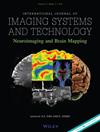SuperFormer: Unet-Like Super Token Transformer for Medical Image Segmentation
Abstract
The application of computer-aided diagnosis in the medical field is gradually becoming widespread. Multi-organ segmentation in clinical abdominal CT images and cardiac MRI images poses a challenging task. Accurate segmentation of multiple organs is a crucial prerequisite for disease diagnosis and treatment planning. In this paper, we introduce a multi-organ segmentation method based on CT or MRI images: SuperFormer.SuperFormer is a hierarchical encoder-decoder network with two compelling designs: (1) It introduces the super token transformer block into the U-shaped encoder-decoder structure, making it easier to extract global information while significantly improving computational efficiency. (2) It presents a channel-based multi-scale Transformer context bridge for effectively extracting correlations of global dependencies and local context in multi-scale features generated by our hierarchical Transformer encoder. This guides the efficient connection of fused multi-scale channel information to decoder features, eliminating the semantic gap. In medical image segmentation, SuperFormer demonstrates a powerful ability to capture more discriminative dependencies and context. Experimental results on multi-organ segmentation and cardiac segmentation tasks demonstrate the algorithm's superiority, effectiveness, and robustness. Specifically, experimental results from training SuperFormer from scratch even surpass state-of-the-art methods pretrained on ImageNet, and its core design can be extended to other visual segmentation tasks.

 求助内容:
求助内容: 应助结果提醒方式:
应助结果提醒方式:


